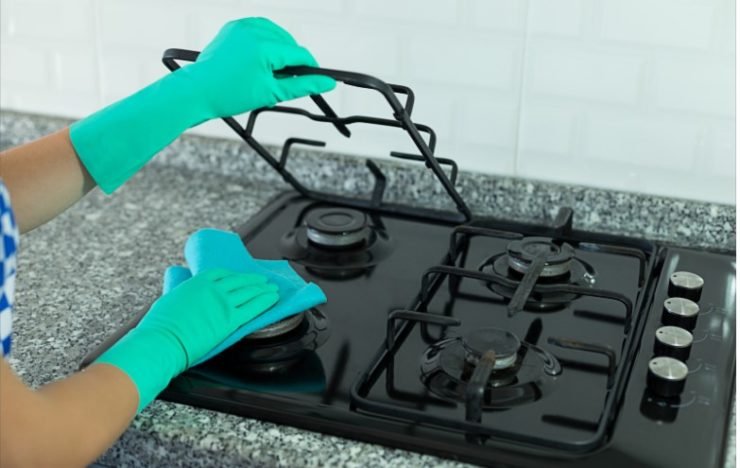Electric stove coils are a common fixture of many homes and apartments.
What’s just as common is the need to clean them. For many of us, the toughest part is overcoming the dread and hassle of this exercise.
But fear not!
Whether you’ve just moved into an apartment where the electrical coils were neglected, or just want some ways to streamline your kitchen cleaning routine, I will share some tips and tricks that will make it less of a chore.
As a professional cook who has to clean nightly, and as a dad who probably does more frying at home than he ought to, here are some of my favorite ways to make your coil cleaning experience a little easier.
In This Article
Remove The Coil
The first thing is to make sure the stove is off and cool to the touch; I’ve made this mistake before!
To remove the coil, gently press in where the coil plugs into the stove and lift the opposite end slightly. With a slight tug, you can remove the coil like a plug from a socket.
Remove The Drip Pan
When you remove a coil from the stove, the drip pan underneath will be exposed. You should be able to simply lift it from the stove.
The drip pan can be washed like regular dishes, and it is OK to put into the dishwater.

Pro-tip: You can line the drip pan with aluminum foil to reduce the amount of cleaning you have to do. If done regularly, you can simply replace it with a new aluminum foil lining when it starts to get a bit dirty.
With the drip pans removed, this presents a great opportunity to give the stove surface itself a good clean. A clean kitchen towel to remove any debris and a soapy sponge usually does the trick.
Progress Through 4 Coil Cleaning Methods
Before you expend any elbow grease, rinsing the electric stove coils goes a long way toward removing any food debris.
Sometimes this may be all you need to do!
Here’s the progression of 4 methods I go through at home, from most basic to more involved.
Method 1: Wash With Soap And Water

This is the easiest and most common way to clean your coils. If you are cleaning your coils regularly, there’s a good chance this is all you’ll need to do.
With warm water and a soapy sponge, rub away any food debris or grease that is stuck to the coil.
I will do this if I just made a sauce or soup, especially if some of it dripped onto the coils. Even with the specters of my former head chef (demanding cleanliness) in my head, I tend to get pretty messy.
For more stubborn spatters, consider using any one or more of the following tips.
Method 2: Use A Baking Soda Paste
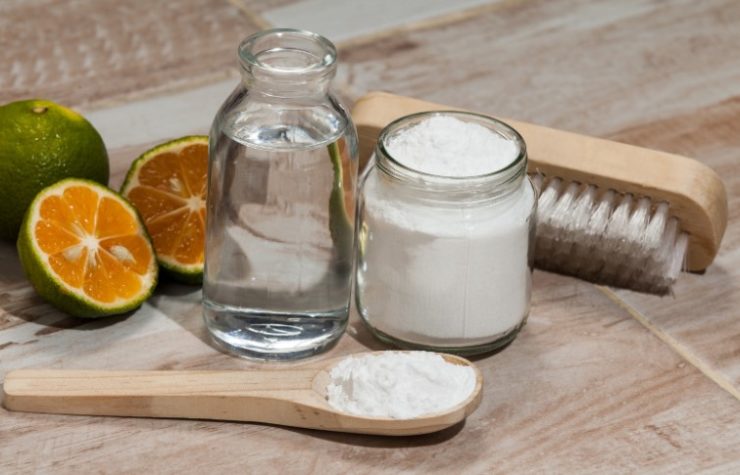
Using one part baking soda to three parts water to make a paste can be a very effective way to clean stubborn messes. It can be great for the stovetop as well!
Rub the baking soda paste into the coil with a damp towel, sponge, or even a toothbrush. Rinse it off after removing any caked food debris and grease.
Baking soda paste is great at absorbing grease that has soiled your coils, and grease doesn’t always come off easily with just a rinse.
This is great for when cheese drips onto the coil, or when the odd piece of noodle gets stuck to it. Sometimes I swear it’s like a piece of spaghetti is glued to the coil.
Method 3: Spray With Degreaser
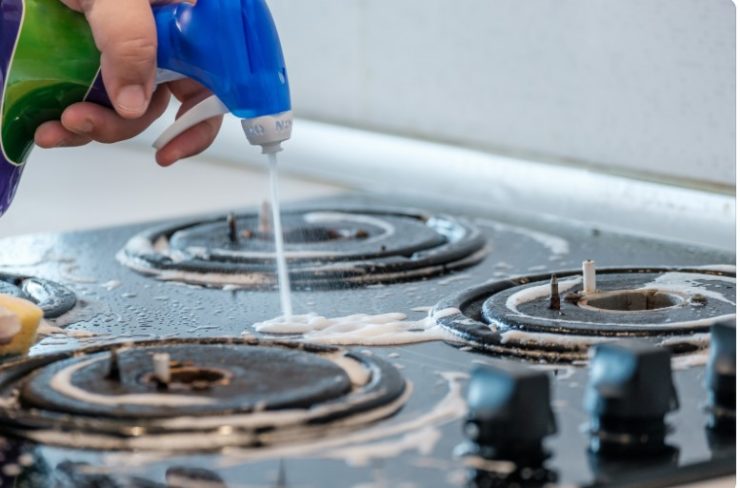
When I have a lot going on in the kitchen, I like to spray the coils with a degreaser and let them sit in the sink for a bit.
While you’re busy tending to other matters, the degreaser will work its magic. It soaks into the coils, loosening up any caked-on debris.
It’s not quite set-it-and-forget-it, but it does afford you time to work on something else, and makes it easier to wash and wipe clean.
Rinse thoroughly after you’ve used the degreaser. I’ll even follow up with hot water and a soapy sponge for especially dirty coils.
Method 4: Rub With Aluminum Or Tin Foil

I was quite surprised when I learned this trick and how effective it can be.
Instead of using steel wool on hardened gunk, consider using a crumpled piece of aluminum or tin foil.
This provides the friction you’d like to have with a ball of steel wool, but isn’t nearly as abrasive and just about as effective.
This is a great way to follow up a stubborn mess after soaking a coil in degreaser, or even as a first step before washing with soap and water.
Dry The Coil
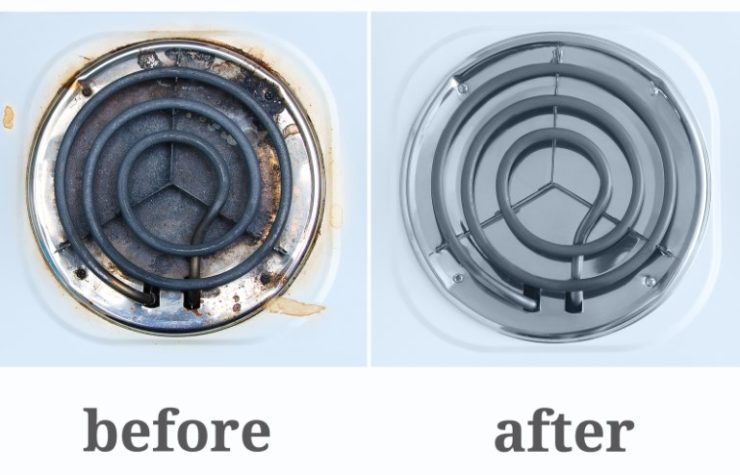
Before you plug the coils back in, make sure the coils are completely dry. This is a safety precaution. If the metal elements have any moisture on them when they are plugged in, it can result in a short or a shock. Safety first!

Pro-tip: If you suspect your coils could have a crack in them that moisture can seep into, or if you just really want to make sure your coils are truly dry, put them in the oven at low heat (150°F-200°F) for 15 minutes will dry them out completely.
Induction And Glass Stovetops
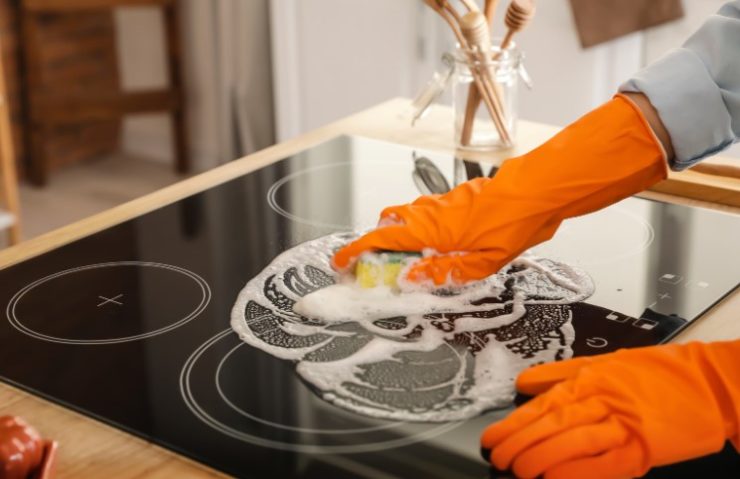
If you are considering an upgrade, or need to replace an electric coil stove that doesn’t work anymore, both induction and glass stovetops are great options.
Suppose you don’t want a stove that uses an open flame. In that case, both induction and glass stovetops can provide similar cooking experiences to electric coils. However, they do not require the same degree of maintenance, and are a lot easier to clean.
Glass stovetops work to cook food through the direct transfer of heat like traditional electric coils.
Induction stovetops are a newer technology, and use magnetism to heat a pan directly. This does require a magnetic pan, and not all cookware is compatible with induction stovetops.
Frequently Asked Questions
Can you use steel wool on stove coils?
Steel wool is very abrasive. If your stove coils are especially gunky, using a crumpled piece of tin or aluminum foil to scrub will do the trick without scratching or chipping the coils.
Is it safe to wash electric stove burners?
It is very safe to wash electric stove burners and is an important part of proper maintenance.
Why are the coils on my stove burning?
The likely cause for this is grease, oil, or food debris that is burning on the coil.
